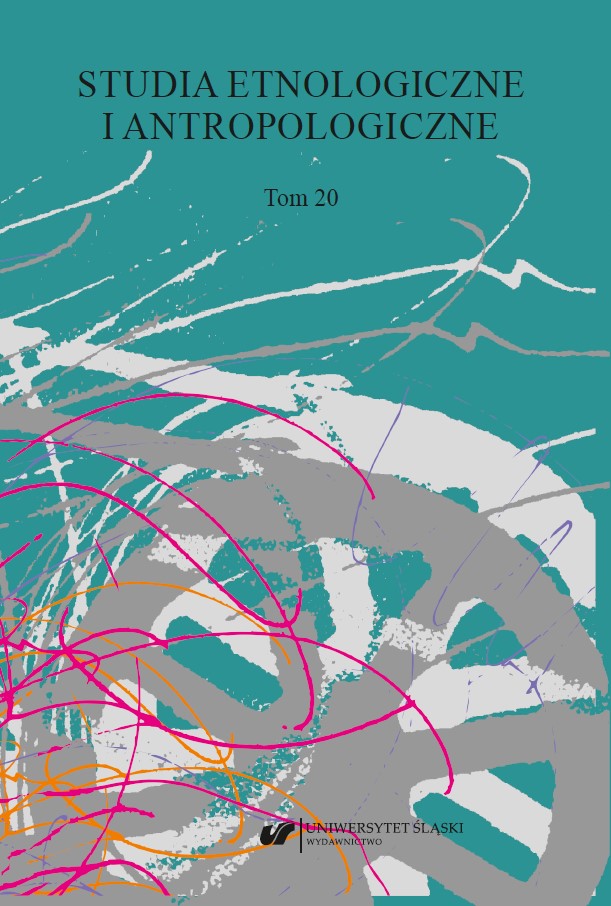Art_Inkubator. http://www.artinkubator.com/ [data dostępu: 15.06.2019].
Google Scholar
ART_INKUBATOR w Fabryce Sztuki. Łódź [2014; materiały promocyjne Fabryki Sztuki, archiwum własne].
Google Scholar
Bonisławski R.: Łódź najważniejsze obiekty krajoznawcze. Łódź [materiały promocyjne Urzędu Miasta Łodzi, archiwum własne].
Google Scholar
Gaweł Ł.: Szlaki dziedzictwa kulturowego. Teoria i praktyka zarządzania. Kraków 2011.
Google Scholar
Hac A.: Scheibler i Grohman – wspólny interes spadkobierców. Wyborcza.pl. 8.08.2011. http://lodz.wyborcza.pl/lodz/1,35136,10078586,Scheibler_i_Grohman___wspolny_interes_spadkobiercow.html [data dostępu: 13.06.2019].
Google Scholar
Jaśkiewicz A.: Postrzeganie Szlaku Architektury Przemysłowej Łodzi przez mieszkańców miasta. Przykład partycypacji społecznej w badaniach nad turystyką. „Turyzm” 2017, 27, z. 1, s. 7–17.
Google Scholar
Jędrysiak T.: Turystyka kulturowa w obiektach poprzemysłowych – zagadnienia ogólne. „Turystyka Kulturowa” 2011, vol. 6, s. 8–27.
Google Scholar
Joint ICOMOS – TICCIH Principles for the Conservation of Industrial Heritage Sites, Structures, Areas and Landscapes “The Dublin Principles” adopted by the 17th ICOMOS General Assembly on 28 November 2011 in Paris.
Google Scholar
Konwencja w sprawie ochrony światowego dziedzictwa kulturalnego i naturalnego, przyjęta w Paryżu dnia 16 listopada 1972 r. przez Konferencję Generalną Organizacji Narodów Zjednoczonych dla Wychowania, Nauki i Kultury na jej siedemnastej sesji. Dz.U. 1976 nr 32 poz. 190.
Google Scholar
Konwencja UNESCO w sprawie ochrony niematerialnego dziedzictwa kulturowego, sporządzona w Paryżu dnia 17 października 2003 r. Dz.U. 2011 nr 172 poz. 1018.
Google Scholar
Krakowiak A.: Muzea w Łodzi jako element przestrzeni i walor miasta: Związek muzeów z kreowanym wizerunkiem miasta. „Turyzm” 2015, 25, z. 2, s. 91–101.
Google Scholar
Kronenberg M.: Łódź. Szlak turystyczny. Architektura Przemysłowa. Łódź 2015.
Google Scholar
Kronenberg M.: Rozwój miejskiej przestrzeni turystycznej opartej na dziedzictwie przemysłowym. „Prace Geograficzne” 2009, z. 121, s. 191–198.
Google Scholar
Liszewski S.: Ewolucja funkcji regionotwórczych Łodzi. „Acta Universitatis Lodziensis. Folia Geographica Socio-Oeconomica” 1999, nr 1, s. 41–59.
Google Scholar
Łódź. Centrum przemysłów kreatywnych. [Realizacja: ECC-CF – PURPOSE. Wywiady: M. Ruszkowska-Mazerant, M. Mazerant, M. Klimek. Łódź]. https://uml.lodz.pl/files/public/dla_biznesu/kreatywna/Lodz_Kreuje_Lodz_Creates_the_best_of.pdf [data dostępu: 13.06.2019].
Google Scholar
Midura F.: Dziedzictwo kulturowe elementem ożywienia ruchu turystycznego na wsi. W: V Konferencja Naukowo – Techniczna „Błękitny San” Jabłonka, 24–25 kwietnia 2008, s. 33–42.
Google Scholar
http://www.pogorzedynowskie.pl/data/referaty/VBS/ref_3_VBS.pdf [data dostępu: 9.06.2019].
Google Scholar
Miejsce Art_Inkubatora w Fabryce Sztuki. http://www.artinkubator.com/Main/Artykul/miejsceartinkubator-w-fabryce-sztuki [data dostępu: 15.06.2019].
Google Scholar
Miśkowiec M.: Przemiany terenów poprzemysłowych w miejscach dziedzictwa przemysłu włókienniczego na przykładzie Manchesteru, Lyonu i Łodzi. „Prace Komisji Geografii Przemysłu Polskiego Towarzystwa Geograficznego” 2016, 30 (3), s. 199–212.
Google Scholar
Nowakowska A., Walczak B.: Dziedzictwo przemysłowe jako kapitał terytorialny. Przykład Łodzi. „Gospodarka w Praktyce i Teorii” 2016, nr 4 (45), s. 45–56.
Google Scholar
Pałac Izraela K. Poznańskiego wraz z biurem fabrycznym i przędzalnią wysoką. Urząd Miasta Łodzi, https://uml.lodz.pl/dla-mieszkancow/zabytki/informacje-i-ochrona/pomnik-historii/ palac-izraela-kpoznanskiego-wraz-zbiurem-fabrycznym-iprzedzalnia-wysoka/ [data dostępu: 10.08.2020].
Google Scholar
Rekomendacja UNESCO w sprawie historycznego krajobrazu miejskiego. Tłum. Polski Komitet ds. UNESCO. Paryż 10.11.2011.
Google Scholar
Rewitalizacja. Przebudowa dawnych fabryk Scheiblera. http://www.artinkubator.com/Main/Artykul/rewitalizacjaprzebudowa-dawnych-fabryk-scheiblera [data dostępu: 15.06.2019].
Google Scholar
Wojtoń E.: Dziedzictwo przemysłowe – szansa czy balast? Problem Sosnowca na tle aglomeracji katowickiej. „Ochrona Zabytków” 2010, nr 1–4, s. 157–172.
Google Scholar
Materiały z badań własnych
Google Scholar
Materiały z badań własnych przeprowadzonych na terenie Art_Inkubatora 24–26.04.2015 oraz 13.06.2019. Archiwum własne.
Google Scholar
Zapis rozmowy z dyrektorem Fabryki Sztuki Maciejem Trzebeńskim, przeprowadzonej w Łodzi 26.04.2015. Archiwum własne.
Google Scholar


 https://doi.org/10.31261/SEIA.2020.20.02
https://doi.org/10.31261/SEIA.2020.20.02

 10.31261/SEIA
10.31261/SEIA